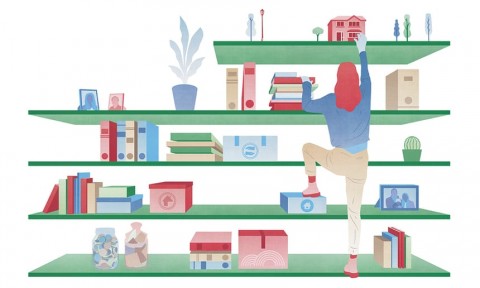
Let’s be honest, moving back in with your parents isn’t easy. You’re used to your freedom. They’re used to peace and quiet. You think you’re a fully functioning adult. They think you’re still 14. There will never be any agreement on doing the washing up. For lots of people looking to get on the property ladder, moving back in with parents seems like the only way to save money on rent and put aside enough to pay for a deposit on a house. But surely there are other ways? Well, yes, there are – some, admittedly, more useful than others.
First, getting into the saving habit … The government-backed Money Advice Service has a useful guide. It suggests working out how much money you have left after paying your main bills for the week or the month. If you find you can do this, try to save at least 5% of your income. The example calculations it offers are also useful. The fictional Jason earns £320 a week. Once he’s paid for all of his essentials, he’s left with £95. Jason then works out that 5% of his income is £16 and puts this into a savings account every week. He thus has £79 to spend on non-essentials like going out with his mates, and, over the year, will have put £832 into his savings. However, it’s not always as simple as that.
For people who can’t put aside Jason’s 5%, there’s a new government saving scheme on the way – it’ll be in place by April 2018 at the latest. Dubbed Help to Save, it’s for people who are in work and receiving working tax credits – you put £50 per month aside and, after two years, the government gives you up to £600. There’s the option of saving for another two years and receiving another £600, to a total pot of £3,600.
Indeed, with the absence of young first-time buyers a political issue, there’s a surprising number of government schemes seeking to help this demographic. The Lifetime Isa – launched in April 2017 and only available to young people people aged 18 to 39 who have never owned a home before – enables you to save up to £4,000 tax-free per year every year until you’re 50. If you then use that money to buy your first home, the government will add a 25% bonus to the sum you’ve saved – up to £1,000 per year in other words. In theory, you could get £32,000 of top-ups from the government, although it will take you 32 years to accrue them ...
If saving is tricky, there’s the equity loan scheme, introduced in 2013 and running until 2021. This offers an interest-free loan for up to 20% of your home’s price – or 40% in London – provided you have a 5% deposit. It’s available to first-time buyers, provided the home you’re after is a new-build costing up to £600,000. After five years, interest rates apply – and if you sell up before paying off the loan, you will forgo 20% of your sale price.
Finally there’s the starter homes scheme – which began this year and the first tranche of houses should be on the market in 2018. The 200,000 planned starter homes will be available to first-time buyers aged between 23 and 40, at a minimum discount of 20% off the market price – though there’s a £250,000 price cap, rising to £450,000 in London. Starter homes can’t be resold or rented at their true market value for at least five years after the initial purchase.
Of course, you don’t have to buy a complete house at once. There’s always shared ownership – which does pretty much what it says on the tin. As long as your income doesn’t exceed £80,000-£90,000 in London, you can buy between 25% and 75% of a home from your local housing association and pay rent on the part you don’t own. Under a process known as “staircasing”, you then have the chance to buy the rest in instalments – as and when you have the money, rather than through regular payments. It’s worth remembering that these instalments will change as the property’s market value changes – the value of your home can go down as well as up – and you have to pay for the valuation each time.
And then there’s the “bank of mum and dad” – currently the UK’s ninth-largest mortgage lender. Some 60% of first-time buyers have assistance from their family and this year parents are expected to lend their kids a total of £6.5bn to help them get on the property ladder.
While there are some specific deals out there and the process can be fraught with complications, the one thing that’s guaranteed is that you won’t be forced to do the washing up.
CREDIT: LLOYDS BANK
